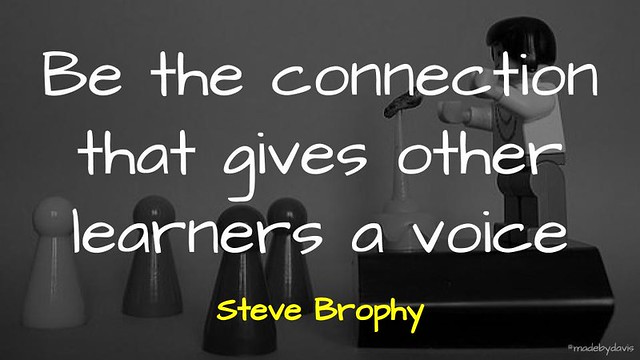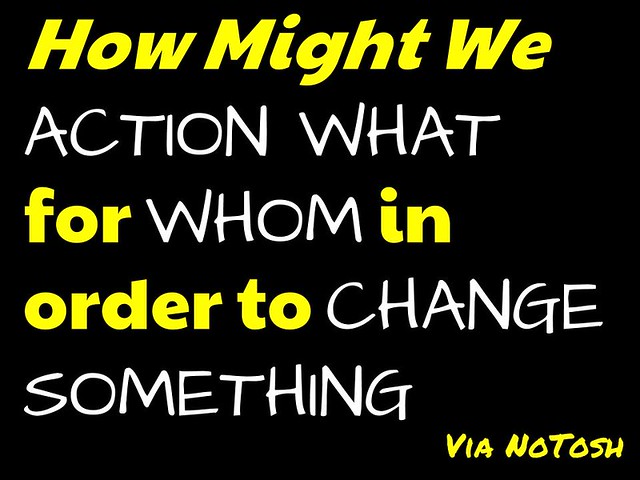
As I sat listening to Jamie Casep field questions at Auckland Summit about the Google Certified Innovator program I felt challenged. Here was me, a supposed ‘innovator’, how was I still pushing to the moon? Where was I at?
I received an email a few months ago notifying me that to maintain my status I would need to update a registry about where I was at. As I looked back at my moonshot from GTASYD14, I felt like an abject failure.
How Might We ENGAGE PARENTS in a CULTURAL SHIFT to make RELATIONSHIPS and CONNECTIONS the focus of learning?
I had dreamed of involving parents in learning, yet beyond creating a school blog (eBox) and taking a keen interest in (parent) data, I had not really gotten anywhere. In addition to this, I had since moved positions and felt even further away from success.
I asked a few other GCI’s and they too were a bit stuck about what I might legitimately put down as my current project. One mentioned my newsletter, however I felt that focused too much on the tool and not enough on the change. Another discussed my role in regards to developing communities of practice. Again that was useful, but not necessarily concrete. I was also asked about my latest creation in starting a Wikity site. This led me to wonder what it was that each of these things maybe trying to get at?
My thoughts led me to something that Steve Brophy discussed in our collaboration a few years back, the idea of “being the connection that gives others a voice.” I was also moved by a recent post from Andrea Stringer on developing collective efficacy. With this in mind I revisited my How Might I question.

I wondered if instead of solely focusing on parents, whether my true intent was about extending ways of giving all involved in education a voice. Whether I already had done so or did it now, I pivoted, looked at my aims and reassessed. Eric Ries might describe it as zooming-out:
Sometimes a single feature is insufficient to support a whole product. In this type of pivot, what was considered the whole product becomes a single feature of a much larger product.
My first step was to list the different projects and activities that I do that came under this banner:
- Create a monthly newsletter to provide a curated list of resources for educators
- Lead the learning through my own open actions as a blogger
- Explore innovative ways of giving voice, whether it be dual-post, engaging with various indie-web ideas, fostering communities of practice or developing an extensive blog roll.
- Reflect on the features and affordances of various platforms and practices to help others develop a more informed decision around their online presence.
- Support other ideas and action where applicable by encouraging connections, whether it be listening as a coach, providing a comment to extend a discussion or sharing a resource to generate conversation.
With this done, I set about assessing my statement. Rather than focusing solely on parents, my focus would be on all the voices within education, and rather than a particular focus on bringing teachers into the classroom my focus would be about supporting active voices in education. Maybe it would read like this:
How Might I SUPPORT ALL STAKEHOLDERS IN EDUCATION in HAVING A MORE ACTIVE VOICE with what is HAPPENING TODAY?
Not completely sure that is it, maybe you have a suggestion on the wording or the focus, but rather than sitting on it I am going to ship it, hoping that you might be able to help me by giving your perspective? As always, comments welcome.
If you enjoy what you read here, feel free to sign up for my monthly newsletter to catch up on all things learning, edtech and storytelling.
Towards Collective Innovation by Aaron Davis is licensed under a Creative Commons Attribution-ShareAlike 4.0 International License.

Always pushing & asking more of yourself & others. Thanks Aaron.
Hello Aaron,
After reading your interesting post, these are the words that come to mind with respects to your mission:
“How might I support all learners in having more autonomy, interaction, and transparency with their education?”
I’m not sure that my words are spot on, but I think as more individuals advance their learning, while sharing and connecting with other learners, the education institution must move forward. Downes’ and Siemens’ Connectivist Learning Theory bubbles to the surface of my thinking on this: http://education-2020.wikispaces.com/Connectivism
This is a noble pursuit that I admire. Once again, you’ve got me thinking about my mission, and how I can assess progress towards targets.
Bob
Hi Aaron
Your post struck a chord with me. I too feel that abject failure!
The drive to continue innovation that furthers my Moonshot “How might we provide teachers with experiences that develop growth mindsets…” has been lost amid the relentlessness of life as a classroom teacher.
I recently completed a Post Graduate Certificate in Digital & Collaborative Learning (Applied Practice) through the Mind Lab in New Zealand. During the course of this programme, I researched Growth Mindset and its effect on students of indigenous cultures.
https://drive.google.com/file/d/0B0NFDazRsOqlR2g5LVhwSkQtRTg/view?usp=sharing
Connecting again with my mentor, Chris Betcher has reinvigorated my interest in our Google Innovator projects. Thanks for bringing into the forefront of my mind again. Watch this space, e hoa.
Ngā mihi
Juliet
Thank you Juliet for the comment,
Not even going to argue about time with you. Can only imagine how much work you are required to do outside of class. Wondering with your \’Moonshot\’ whether a (re)starting point would be to develop a collaborative website bringing together resources and activities? Maybe in a space like Blogger? Happy to have a go at setting it up and populating it. I too have written about mindsets. Let me know or maybe you have already started something that needs to jumpstart?
Aaron